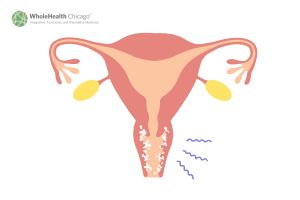In our recent Health Tip, we delved into the intricate world of Candida and yeast infections, but when it comes to sheer prevalence, the most common vaginal ailment is Bacterial Vaginosis (B.V., for brevity), typically ignited by a variety of culprits, with Gardnerella being the prime suspect. While B.V. isn’t classified as a traditional sexually transmitted disease (STD), it predominantly affects sexually active women. This condition arises due to shifts in vaginal conditions, triggered by factors such as antibiotics, changes in birth control methods, well-meaning douching practices, and even wardrobe choices like spandex or nylon underwear. Symptoms vary from absence (detected incidentally during routine PAP smears) to a thin, greyish-white, and itchy discharge. A savvy health care practitioner can diagnose B.V. based on symptoms, discharge appearance, and microscopic examination. The standard prescription often includes metronidazole, available as a vaginal cream or tablet, but boric acid suppositories have also been a trusted option for nearly a century. Additionally, maintaining a healthy vaginal microbiome with probiotics can be beneficial.
Tag: gynecology
Common Vaginal Infections, Number 1: CANDIDA
In the realm of women’s health, few topics carry as much importance and intrigue as common vaginal infections, and Candida, often synonymous with “yeast infections,” holds a prominent place in this narrative. Candida, those resilient single-cell organisms, have coexisted with us since time immemorial, occasionally venturing into the spotlight when things down there fall out of balance. This blog post delves into the world of Candida, discussing its prevalence, symptoms, and factors that can tip the scales in its favor. From the relentless use of antibiotics to the sweet tooth of diabetics, we explore the intricate dynamics of Candida overgrowth and offer insights into managing these troublesome vaginal infections. So, join us on this journey into the realm of women’s health as we unravel the Candida conundrum and empower you with knowledge to foster a healthier vaginal microbiome.

